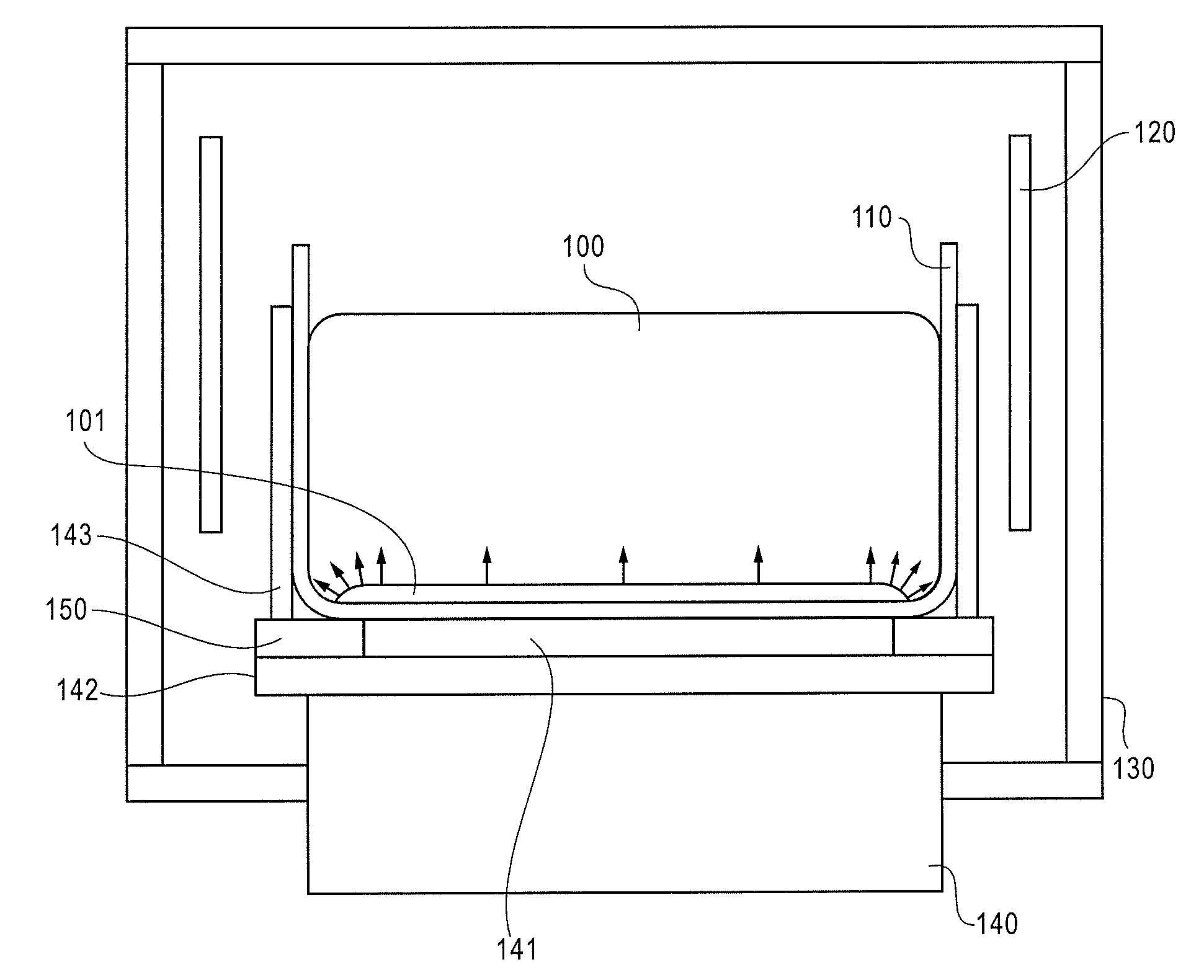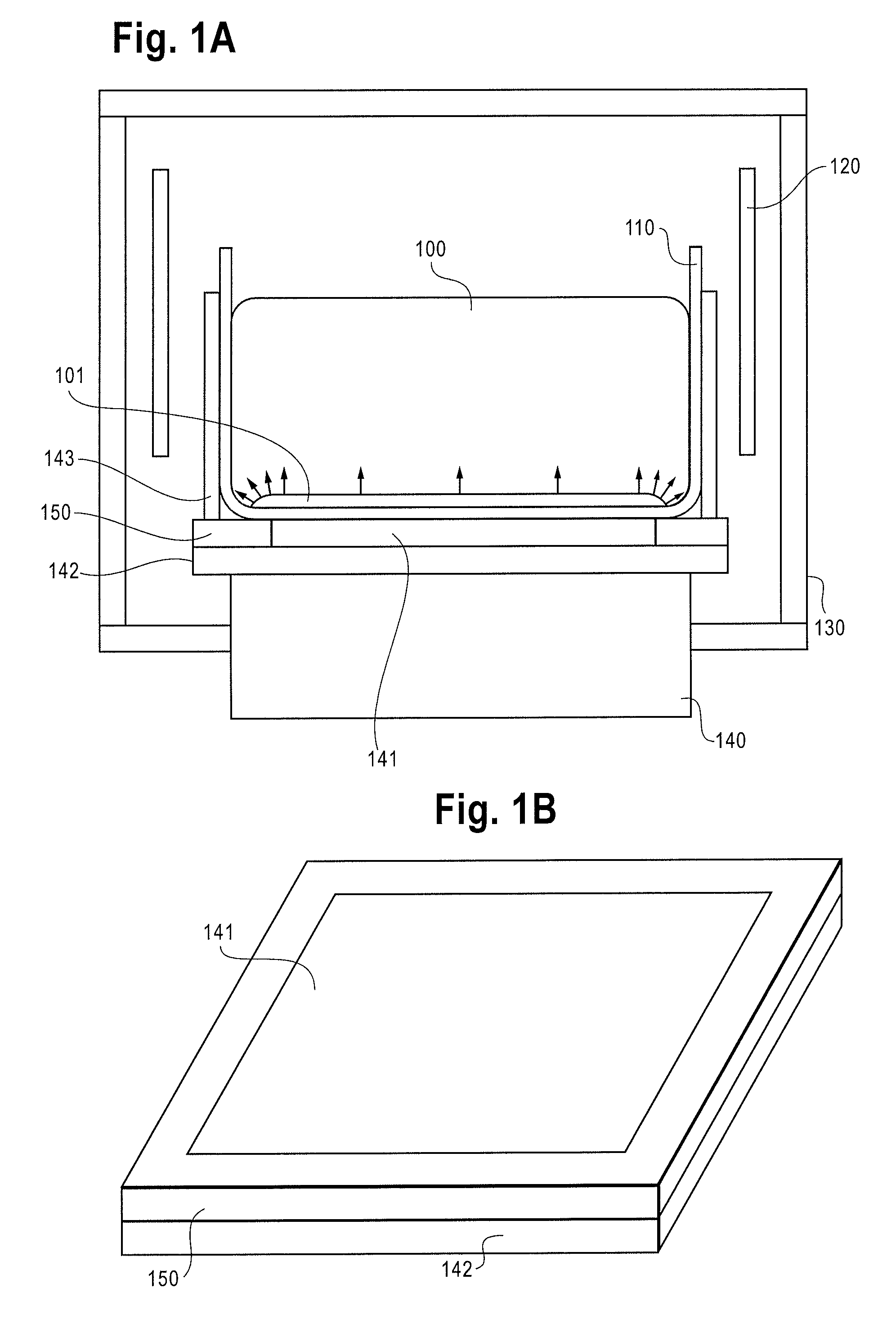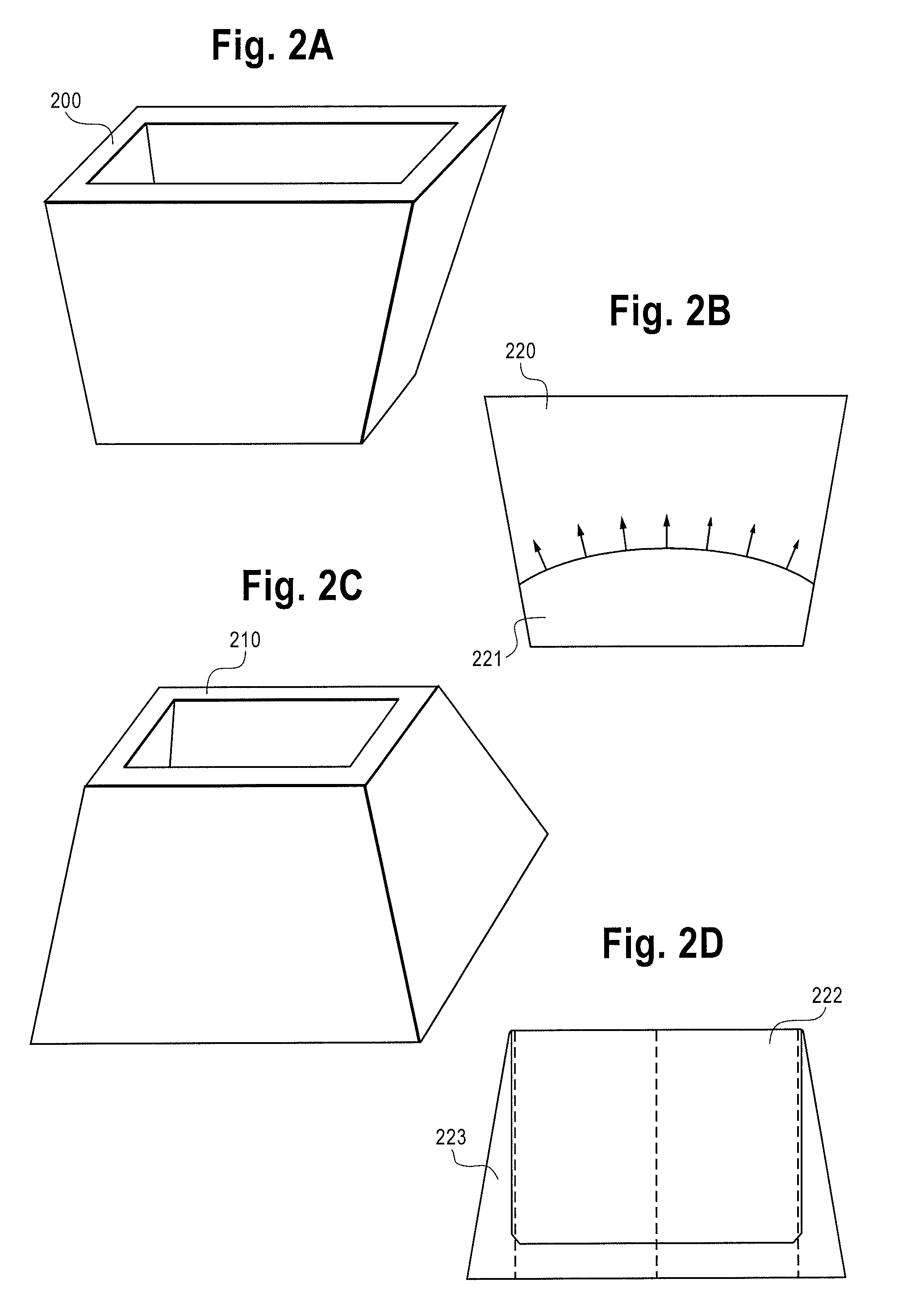Methods and Apparatuses for Manufacturing Cast Silicon From Seed Crystals
- Summary
- Abstract
- Description
- Claims
- Application Information
AI Technical Summary
Benefits of technology
Problems solved by technology
Method used
Image
Examples
example 1
[0089]Crucible preparation: A crucible was placed on a supporting structure consisting of two layers. The bottom layer of the supporting structure is a solid isomolded graphite plate measuring 80 cm by 80 cm by 2.5 cm which supported a composite layer. The upper composite layer had an inner region that was a thermally conducting isomolded graphite plate measuring 60 cm by 60 cm by 1.2 cm, and was surrounded on all sides by a 10 cm perimeter of thermally insulating graphite fiber board of 1.2 cm thickness. In this way, the composite layer completely covered the bottom layer.
[0090]Seed preparation: A boule of pure Czochralski (CZ) silicon (monocrystalline) obtained from MEMC, Inc. and having 0.3 ppma of boron, was cut down along its length using a diamond coated band saw so that it had a square cross section measuring from 140 mm per side. The resulting block of monocrystalline silicon was cut through its cross section using the same saw into slabs having a thickness of about 2 cm to ...
example 2
[0092]Seeding was accomplished as in Example 1, and an ingot was cast containing a large monocrystalline volume. After cooling, the ingot was stood on its side and loaded into a band saw with fixed diamond abrasive for cutting. The bottom of the ingot was cut off as a single layer with a thickness of 2 cm. This layer was then fixed horizontally on a cutting table. In the same band saw, the edges of the layer were trimmed such that approximately 1.5 cm was removed from each side. The slab was then sandblasted to remove glue and foreign materials, after which it was etched in a hot sodium hydroxide bath, rinsed, and dipped in a HCl bath to remove metals. The slab was then placed on the bottom of a standard crucible of the same size as the previous ingot. Silicon feedstock was loaded to a total mass of 265 kg and the casting process was repeated, producing a second seeded ingot.
example 3
[0093]Seed preparation: A seed layer was prepared, starting with 18 kg of square, (100), plates used to line the bottom of a crucible, providing a coverage area of 58 by 58 cm and a thickness ranging from 2-3 cm. These plates were placed together into a larger square that was centered in the crucible. Next, this square was surrounded by a 2 cm thick layer of (111) oriented seed crystals, making the total seed layer a 63 cm by 63 cm square.
[0094]Casting: The crucible containing the seeds was filled with silicon to a total mass of 265 kg and placed in a casting station. Casting was performed as in Example 1, monitoring the process to assure that the seed layer remained intact through the end of melt and beginning of solidification. The resulting ingot was cut into a 5×5 grid of 12.5 cm bricks. Optical inspection of the crystal structure of the bricks showed that the (111) crystals acted as a buffer layer, preventing the ingress of randomly nucleated grains into the (100) volume.
PUM
| Property | Measurement | Unit |
|---|---|---|
| Length | aaaaa | aaaaa |
| Fraction | aaaaa | aaaaa |
| Fraction | aaaaa | aaaaa |
Abstract
Description
Claims
Application Information
 Login to View More
Login to View More - R&D
- Intellectual Property
- Life Sciences
- Materials
- Tech Scout
- Unparalleled Data Quality
- Higher Quality Content
- 60% Fewer Hallucinations
Browse by: Latest US Patents, China's latest patents, Technical Efficacy Thesaurus, Application Domain, Technology Topic, Popular Technical Reports.
© 2025 PatSnap. All rights reserved.Legal|Privacy policy|Modern Slavery Act Transparency Statement|Sitemap|About US| Contact US: help@patsnap.com



